Unique Words Blind Identification of Time Division Multiple Access Modulated Data Based on Fourth Order Correlation
-
摘要: 针对非合作通信中时分多址(TDMA)信号的独特码(UW)盲识别问题,该文首次提出分布式独特码的盲识别算法。区别于比特层的独特码识别算法,该文分别针对集中式独特码和分布式独特码,提出面向调制数据不同窗口之间相关性的波形层独特码识别算法。算法利用独特码的一致性与相关性,分两步进行,首先通过差分累积消除不同突发信号间频偏与相偏的影响,来纵向对齐各个突发信号的独特码,然后通过多层差分共轭4阶相关算法识别出独特码的位置和长度。仿真分析了不同突发个数、信噪比和有无频偏相偏情况下算法的性能,验证了波形层识别独特码的有效性,针对集中式独特码和分布式独特码,所提算法在信噪比为5 dB时均达到了95%以上的识别率,具有一定的工程应用价值。Abstract: Considering the problem of blind identification of Unique Words (UW) for Time Division Multiple Access (TDMA) signals in non-cooperative communication, a blind identification algorithm for distributed UW is proposed in this paper. Different from the unique codes recognition algorithm at the bit layer, a unique words recognition algorithm at the waveform layer oriented to the correlation is proposed between different windows of the modulated data for centralised unique words and distributed unique words, respectively. The algorithm takes advantage of the consistency and correlation of the unique words and proceeds in two steps: firstly, the unique words of different burst signals are vertically aligned by eliminating the effects of frequency and phase bias between the different burst signals through differential accumulation, and then the positions and lengths of the unique words are identified by the multilayer differential conjugate fourth order correlation algorithm. The performance of the algorithm is simulated and analysed with different number of bursts, signal-to-noise ratios, and with or without frequency and phase biases, and the effectiveness of the waveform layer identification of unique words is verified, and the algorithm achieves more than 95% of the identification rate at a signal-to-noise ratio of 5dB for both centralized and distributed unique words, which is of certain value for engineering applications.
-
算法1 集中式独特码盲识别算法 输入:接收信号$ {\mathbf{r}} $,$ n $个突发的粗起始位置${s_1},{s_2}, \cdots ,{s_n}$,对齐所
用数据长度${L_0}$,判决阈值${\text{th}}$输出:独特码起止位置 (1)${{\mathbf{B}}_1} = r({s_1},{s_1} + 1, \cdots ,{s_1} + {L_0} - 1)$ (2)for $k = 2,3, \cdots ,n$ do (3) for $m = - c, - c + 1, \cdots ,c - 1,c$ do(其中$\left[ { - c,c} \right]$假设为延
迟范围)(4) ${\mathbf{B}}_k^m = r({s_k} + m,{s_k} + m + 1, \cdots ,{s_k} + m + L{}_0 - 1)$; (5) 利用式(9)计算${R_{1k}}(m)$; (6) end for (7) ${R_{1k}}(m)$的最大值对应的$m$为${{\mathbf{B}}_1}$与${{\mathbf{B}}_k}$之间的延迟; (8)end for (9) 令已对齐独特码的$ n $个突发信号纵向排列; (10) for $i = 2,3, \cdots ,{L_0} - {w_0} - 1$ do (11) 利用式(17)计算${\text{Corr(}}i{\text{)}}$,并进行能量归一化; (12) if ${\text{Corr(}}i{\text{) > th}}$ then (13) 认为$i$所处位置为独特码的一部分; (14) end if (15)end for (16)判断出集中式独特码位置; 算法2 分布式独特码盲识别算法 输入:接收信号$ {\mathbf{r}} $,$ n $个突发的粗起始位置${s_1},{s_2}, \cdots ,{s_n}$,对齐所
用数据长度${L_0}$,判决阈值${\text{th}}$输出:独特码起止位置及分布格式 (1) ${{\mathbf{B}}_1} = r({s_1},{s_1} + 1, \cdots ,{s_1} + {L_0} - 1)$ (2) for $k = 2,3, \cdots ,n$ do (3) for $m = - c, - c + 1, \cdots ,c - 1,c$ do (4) ${\mathbf{B}}_k^m = r({s_k} + m,{s_k} + m + 1, \cdots ,{s_k} + m + L{}_0 - 1)$; (5) for ${N'} = {N_1},{N_1} + 1, \cdots ,{N_2}$ do (6) for ${H'} = {H_1},{H_1} + 1, \cdots ,{H_2}$ do (7) 利用式(14)计算${R_{1k}}(m,{N'},{H'})$; (8) end for (9) end for (10) end for (11) ${R_{1k}}(m,{N'},{H'})$的最大值对应的$m$为${{\mathbf{B}}_1}$与${{\mathbf{B}}_k}$的延迟; (12)end for (13) 令已对齐独特码的$ n $个突发信号纵向排列; (14) for $i = 2,3, \cdots ,{L_0} - {w_0} - 1$ do (15) 利用式(17)计算${\text{Corr(}}i{\text{)}}$,并进行能量归一化; (16) if ${\text{Corr(}}i{\text{) > th}}$ then (17) 认为$i$所处位置为独特码的一部分; (18) end if (19) end for (20) 判断出分布式独特码位置以及分布格式; 表 1 突发信号格式统计
TDMA信号 突发信号格式 集中式独特码TDMA信号1 128独特码采样点+不定长度数据 集中式独特码TDMA信号2 256独特码采样点+不定长度数据 分布式独特码TDMA信号1 16独特码采样点+104数据采样点+···+16独特码采样点+104数据采样点 分布式独特码TDMA信号2 32独特码采样点+208数据采样点+···+32独特码采样点+208数据采样点 表 2 6 dB信噪比下独特码识别结果统计
TDMA信号 识别结果 集中式独特码TDMA信号1 独特码长度为127个采样点 集中式独特码TDMA信号2 独特码长度为259个采样点 分布式独特码TDMA信号1 每个模块为16个独特码采样点+104个数据采样点 分布式独特码TDMA信号2 每个模块为31个独特码采样点+209个数据采样点 -
[1] 张永光, 楼才义. 信道编码及其识别分析[M]. 4版. 北京: 电子工业出版社, 2010: 1–2.ZHANG Yongguang and LOU Caiyi. Channel Coding and Recognition Analysis[M]. 4th ed. Beijing: Publishing House of Electronics Industry, 2010: 1–2. [2] AL-AZZEH J, FAURE E, SHCHERBA A, et al. Permutation-based frame synchronization method for data transmission systems with short packets[J]. Egyptian Informatics Journal, 2022, 23(3): 529–545. doi: 10.1016/j.eij.2022.05.005. [3] SON W, CHOI J, PARK S, et al. A time synchronization protocol for barrage relay networks[J]. Sensors, 2023, 23(5): 2447. doi: 10.3390/s23052447. [4] LI Xinhao, MA Tao, and QIAN Qishu. Frame synchronization method based on association rules for CNAV-2 messages[J]. Chinese Journal of Electronics, 2023, 32(2): 295–302. doi: 10.23919/cje.2021.00.148. [5] 侯骁宇, 李天昀, 杨司韩. 分布式独特码TDMA信号的检测和频率估计[J]. 信号处理, 2018, 34(10): 1211–1220. doi: 10.16798/j.issn.1003-0530.2018.10.009.HOU Xiaoyu, LI Tianyun, and YANG Sihan. Detection and frequency estimation of distributed unique word TDMA signal[J]. Journal of Signal Processing, 2018, 34(10): 1211–1220. doi: 10.16798/j.issn.1003-0530.2018.10.009. [6] 刘明. 一种改进的分段式互相关帧同步检测方法[J]. 通信技术, 2023, 56(6): 708–713. doi: 10.3969/j.issn.1002-0802.2023.06.006.LIU Ming. A modified segmental cross-correlation algorithm for frame synchronization detection[J]. Communications Technology, 2023, 56(6): 708–713. doi: 10.3969/j.issn.1002-0802.2023.06.006. [7] ZHANG Shengyuan, SUN Houteng, YUAN Jiangnan, et al. A practical method for blind detection of centralized unique word TDMA signal[C]. 2022 4th International Conference on Communications, Information System and Computer Engineering, Shenzhen, China, 2022: 7–10. doi: 10.1109/CISCE55963.2022.9851161. [8] QASEM Z A H, WANG Junfeng, KUAI Xiaoyan, et al. Enabling unique word OFDM for underwater acoustic communication[J]. IEEE Wireless Communications Letters, 2021, 10(9): 1886–1889. doi: 10.1109/LWC.2021.3085020. [9] D’AMICO A A and MORELLI M. Joint frame detection and channel parameter estimation for OOK free-space optical communications[J]. IEEE Transactions on Communications, 2022, 70(7): 4731–4744. doi: 10.1109/TCOMM.2022.3177768. [10] XU Yiyao, ZHONG Yang, and HUANG Zhiping. An improved blind recognition algorithm of frame parameters based on self-correlation[J]. Information, 2019, 10(2): 64. doi: 10.3390/info10020064. [11] KIL Y S, LEE H, KIM S H, et al. Analysis of blind frame recognition and synchronization based on sync word periodicity[J]. IEEE Access, 2020, 8: 147516–147532. doi: 10.1109/ACCESS.2020.3014426. [12] QIN Jiangyi, HUANG Zhiping, LIU Chunwu, et al. Novel blind recognition algorithm of frame synchronization words based on soft-decision in digital communication systems[J]. PLoS One, 2015, 10(7): e0132114. doi: 10.1371/journal.pone.0132114. [13] 熊颢, 雷迎科, 吴子龙. 基于码元密度检测的帧同步码盲识别算法[J]. 探测与控制学报, 2021, 43(1): 73–78.XIONG Hao, LEI Yingke, and WU Zilong. Frame synchronization code blind recognition based on symbol density detection[J]. Journal of Detection & Control, 2021, 43(1): 73–78. [14] 张玉, 杨晓静. 集中插入式帧同步识别方法[J]. 兵工学报, 2013, 34(5): 554–560. doi: 10.3969/j.issn.1000-1093.2013.05.007.ZHANG Yu and YANG Xiaojing. Recognition method of concentratively inserted frame synchronization[J]. Acta Armamentarii, 2013, 34(5): 554–560. doi: 10.3969/j.issn.1000-1093.2013.05.007. [15] 邵堃, 雷迎科. 基于离散度分析的帧同步快速盲识别算法[J]. 信号处理, 2020, 36(3): 361–372. doi: 10.16798/j.issn.1003-0530.2020.03.006.SHAO Kun and LEI Yingke. Fast blind recognition algorithm of frame synchronization based on dispersion analysis[J]. Journal of Signal Processing, 2020, 36(3): 361–372. doi: 10.16798/j.issn.1003-0530.2020.03.006. [16] 李歆昊, 张旻, 韩树楠. 基于多重分形谱的链路层协议帧同步字盲识别[J]. 电子与信息学报, 2017, 39(7): 1666–1672. doi: 10.11999/JEIT161045.LI Xinhao, ZHANG Min, and HAN Shunan. Frame synchronization word identification of link layer protocol based on multi-fractal spectrum[J]. Journal of Electronics & Information Technology, 2017, 39(7): 1666–1672. doi: 10.11999/JEIT161045. [17] 白彧, 杨晓静, 张玉. 基于高阶统计处理技术的m-序列帧同步码识别[J]. 电子与信息学报, 2012, 34(1): 33–37. doi: 10.3724/SP.J.1146.2011.00500.BAI Yu, YANG Xiaojing, and ZHANG Yu. A recognition method of m-sequence synchronization codes using higher-order statistical processing[J]. Journal of Electronics & Information Technology, 2012, 34(1): 33–37. doi: 10.3724/SP.J.1146.2011.00500. [18] KIL Y S, SONG J M, KIM S H, et al. Deep learning aided blind synchronization word estimation[J]. IEEE Access, 2021, 9: 30321–30334. doi: 10.1109/ACCESS.2021.3058351. [19] 熊静华, 杨战平. 独特码及其编码原理研究[J]. 信息与电子工程, 2003, 1(2): 26–30. doi: 10.3969/j.issn.1672-2892.2003.02.006.XIONG Jinghua and YANG Zhanping. Study on unique signal and its coding principle[J]. Information and Electronic Engineering, 2003, 1(2): 26–30. doi: 10.3969/j.issn.1672-2892.2003.02.006. [20] 何玉红. 基于双滑动窗的TDMA信号盲检测算法实现[J]. 通信技术, 2012, 45(6): 70–72. doi: 10.3969/j.issn.1002-0802.2012.06.021.HE Yuhong. Implementation of TDMA signal blind detection algorithm based on double sliding windows[J]. Communications Technology, 2012, 45(6): 70–72. doi: 10.3969/j.issn.1002-0802.2012.06.021. -






 下载:
下载:

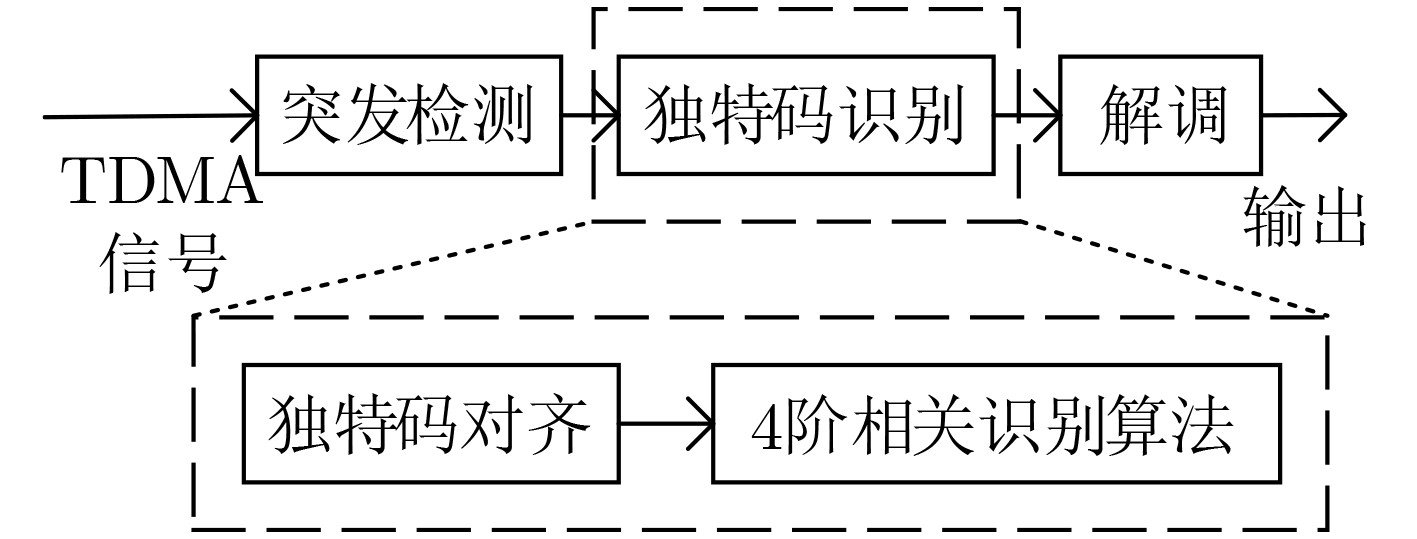

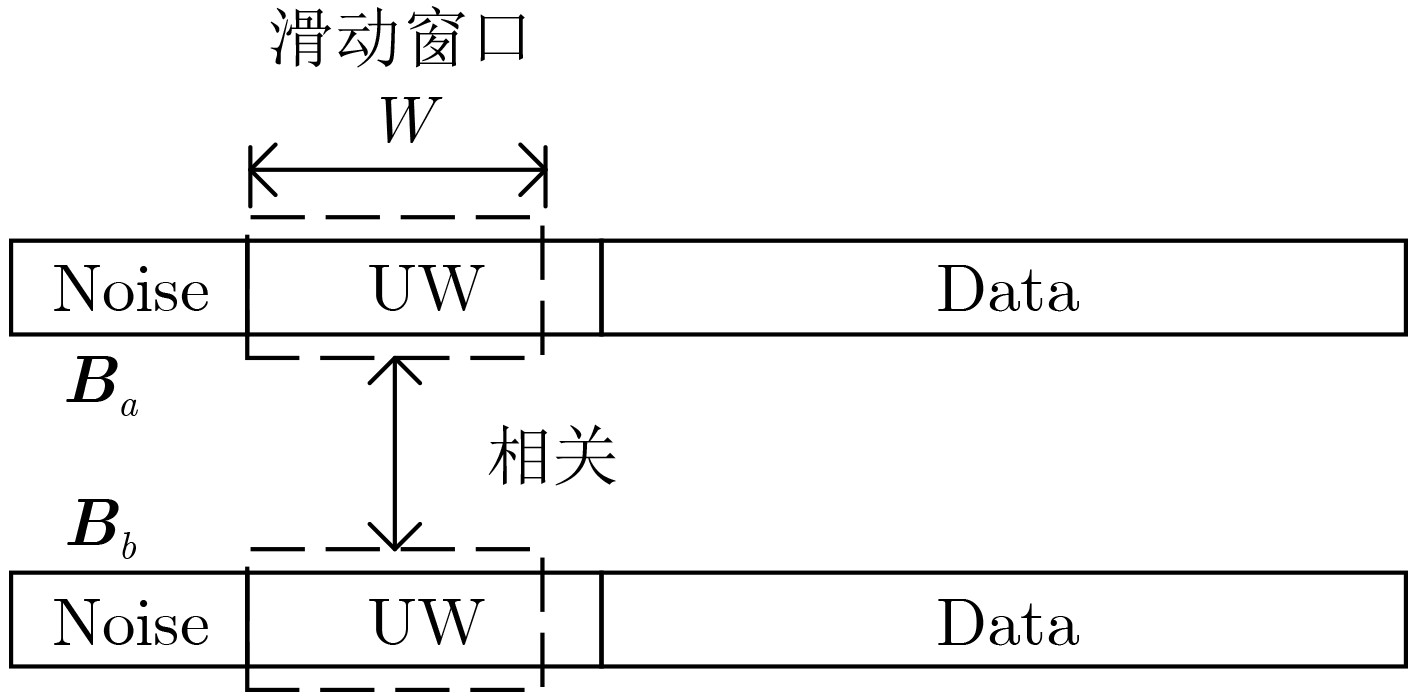
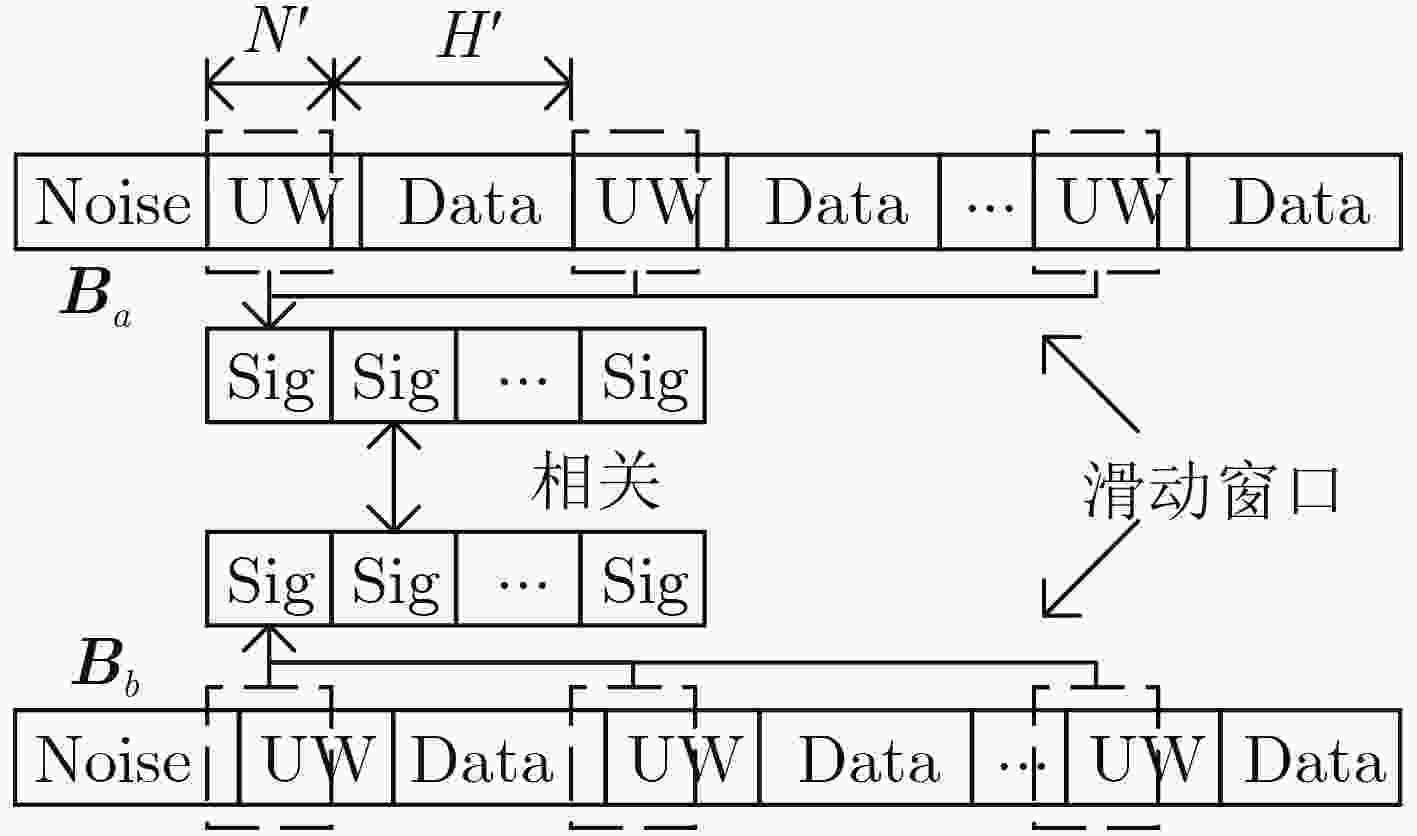



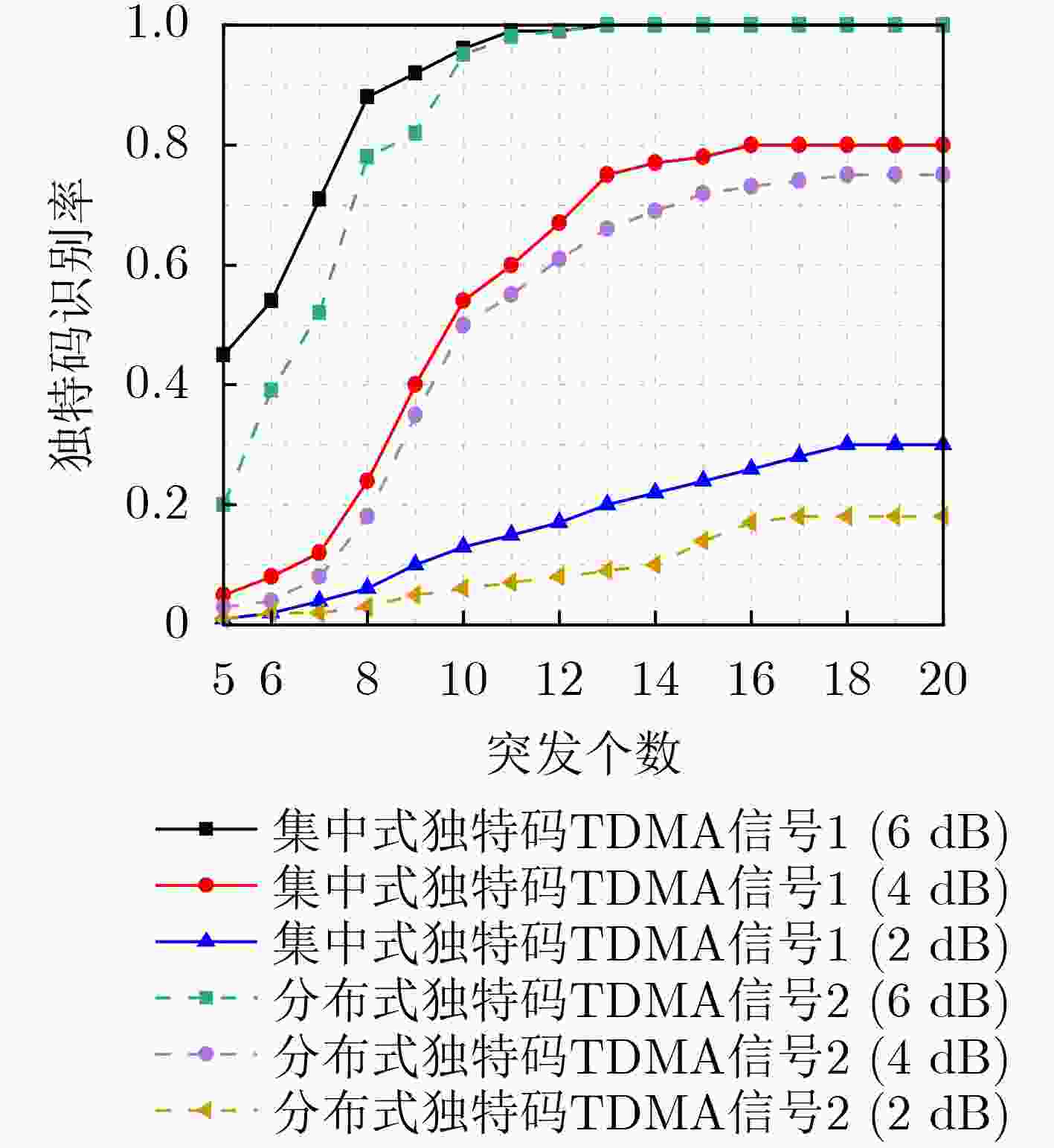
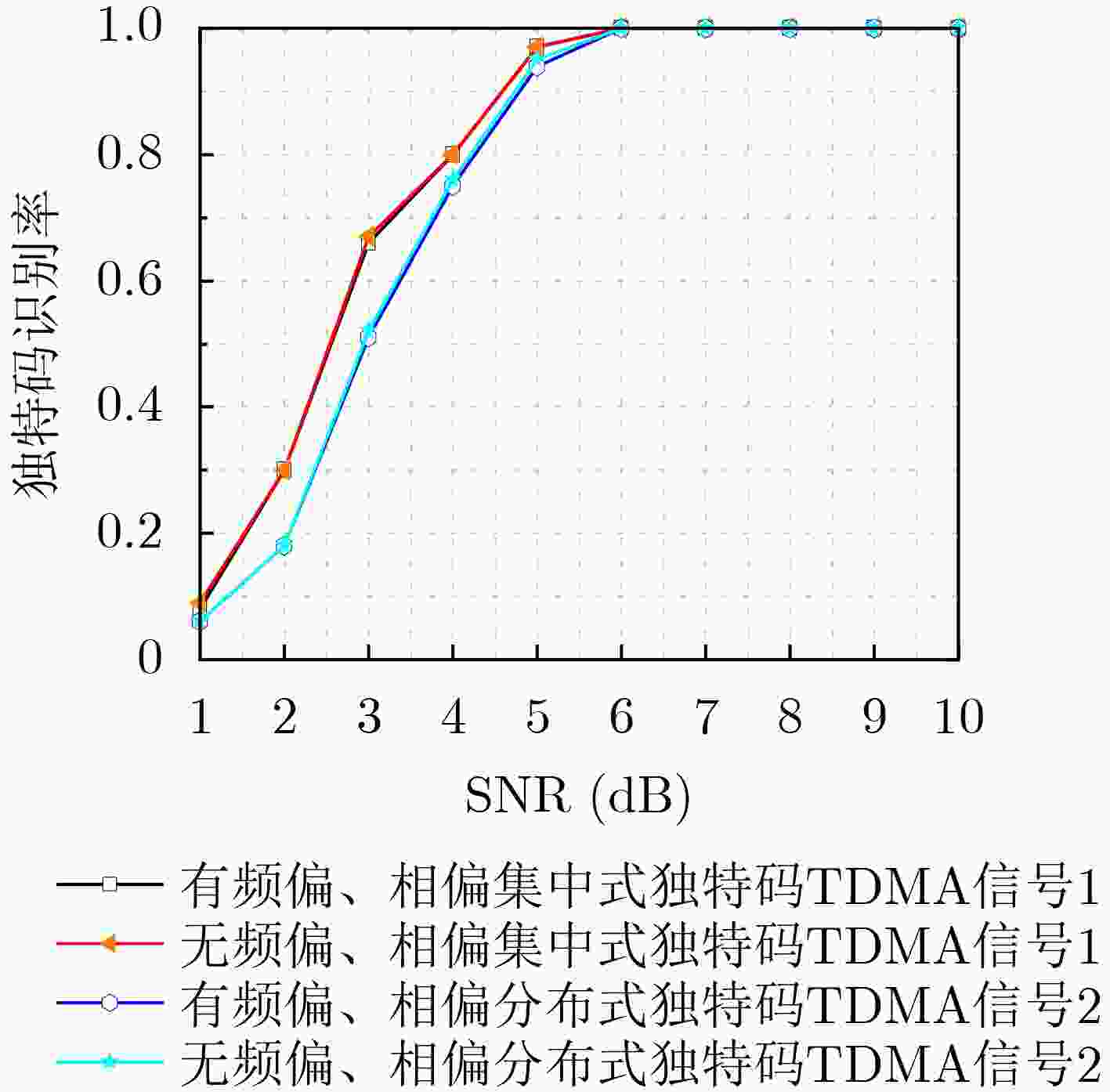



 下载:
下载:
